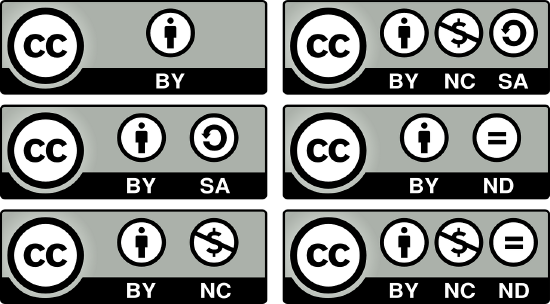2.3: Music Licensing
- Page ID
- 129699
Types of Licenses
There are many ways to license music for your video production. You can subscribe to a music licensing library and browse thousands of songs that can be licensed for your video with a variety of rights to choose from. If you want to use a commercial song in your video, you must obtain two licenses, sync and master licenses. Alternatives to licensing music for your video production are to create all your own original music (either yourself or hiring a composer) or use music that's free or in the public domain.
- Sync (synchronization) license is from the music publisher. The publisher owns the right to the composition itself (that is, the words and melody) and may vary from a large publishing company to individual songwriters who manage their own work.
- Master license is from the recording label. The label controls the actual recording (that is, what you actually hear) of the composition. To license a recording not affiliated with a label (commonly referred to as independent or indie), you will need to contact the artist directly.
If you are looking to license music for use in film festivals most songs can be cleared at around $500 per side, which is $500 for the publishers for the sync rights, and $500 for the person who recorded it for the master rights. If you don’t have enough money in your budget to pay for all the rights up front, you can clear only the film festival rights and add an option to get all media rights up to two years later. To determine who owns the rights to songs, the websites ASCAP and BMI are extremely helpful.
Public domain
Music and lyrics published in the United States before 1923 are in the "public domain" which means no one claims ownership and the music is free to use. A fantastic resource for public domain music and movies is the Internet Archive at ARCHIVE. And, you can check the public domain status of any song at: PD INFO
Royalty-free music does not necessarily mean FREE to use in your video. Many people get confused by this term. Royalty-free means "free of royalty" and simply describes a type of music licensing structure where you pay one price for a piece of music no matter how many times it's used. You can purchase individual music tracks, or subscribe to a service that allows you to use the music in their library for an annual or monthly fee. Be sure to read the licenses for each song, as they can vary from track to track. Some songs are available for free for non-commercial use, but then you have to pay a fee if you want to distribute your work publicly.
Creative Commons and Open Source
Look for the Creative Commons symbol for music that may be easier to use in your project with fewer restrictions, and maybe even free. Open source/community music sites like DIG and FREE MUSIC have filters you can select to choose "free music for commercial projects." Learn about the different types of Creative Common Licenses here.

Figure \(\PageIndex{1}\): Creative Commons Logos depicting Attribution (BY), No Derivatives (ND), Non Commercial Use (NC), and Stand Alone (SA) (CC BY-NC 4.0; Wikimedia Commons)
Find resources for Music Release Forms, Talent and Location Release Forms, production planning templates and more at Freelance Video Collective.


